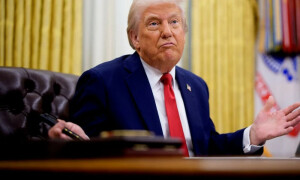Lahore's Metro Bus System (MBS) may be seen as a decent project by some metrics. However, that doesn't mean that the model should be copy-pasted everywhere in the country. Following Lahore's Metro bus, the Rawalpindi-Islamabad transit systems construction activities are in full swing under the supervision of go-getter Chief Minister Punjab (or is it mayor of Lahore), apparently without any adequate economic appraisal or feasibility report and other necessary certifications.
But, before we discuss the twin-city MBS project, the fact remains that even the economic feasibility of Lahore Metro bus could not be justified given that roads, bridges and related infrastructure (costing Rs27bn) for providing dedicated line to the bus was included in the total project of 64 buses running back and forth on the 27-kilometer route.
The buses with their operating system at stations were brought in by Turkish investors on easy installments. The financing was of Rs2 billion, which would be paid back on a return-guaranteed formula whether the buses are operational or not. Then the ticketing system and installation of systems at stations cost around Rs3 billion.
The response by the consumers is great, as on average 150,000 passengers travel in a day on 60 operational buses from Shahdara to Gajju Matta. Thats a good number and is probably attributed to the fact that stations at both ends are two of the busiest and the one-way travel ticket is dirt cheap at Rs20 per passenger. The amount of subsidy Punjab government is incurring to run this operation is Rs45 per passenger trip--or Rs2.5 billion per year (0.3% of Federal transfer to Punjab) burden on exchequer.
These numbers are not alarming as not much is being spent on the subsidy. However, one needs to assess the opportunity cost of this project. The overall cost of this project, including infrastructure, came at Rs32 billion. Lets see it in the perspective of the population of Lahore, where the project is catering to just one route and a fraction of city's population of 9-10 million.
A better alternative could have been to have a spatial coverage of Lahore through an integrated bus system. There was a case of running 1,000 Chinese buses (at a price of Rs10 million per bus) at the existing infrastructure with an outreach to cater to a few millions of Lahoris to save time and cost to travel all around the city.
Infrastructural financing experts say that Rs10 billion would have been enough to run a system operating on a card payment system catering all the lower-middle and low-income classes of the provincial capital. The additional infrastructure required for running this system is a large number of bus stations, which can be financed by national and multinational FMCG companies by means of advertisement.
But, prior to the 2013 general elections, CM Lahore was faced with the political compulsion to select an expensive project for the simple reason that its visibility was higher while the impact was low and the alternate solution could have reverse results. Sadly, economic rationale was superseded by the need to gain vote bank; hence, the suboptimal option was executed.
Still, be that as it may, there is no rationale whatsoever to replicate Lahore's system in Rawalpindi-Islamabad without conducting requisite feasibility studies and planning. According to an industry expert, the major chunk of load would come from the 8-km stretch of Rawalpindi (costing Rs20 billion) connecting at Zero Point interchange from which its a 15-kilometer route to the Pakistan Secretariat in Islamabad. The latter stretch might not have the number of passengers to justify Rs24 billion that it will cost.
The project was approved at the whims of Shahbaz Sharif, based on the assumption that this projects load will be the same as that of Lahore, i.e. 150,000 passengers a day. However, experts are of the view that it will have half the load of what is in Lahore at best and that makes this Rs44 billion project unfeasible.
A better option could have been to have the dedicated bus lines only in Rawalpindi with a few additional buses travelling with existing traffic in Islamabad. Traffic volumes in the capital city are rather thin and roads have space enough to cater to a few busses, if and when need be.
But, despite all logic to the contrary, Sharif is more interested in executing this project in the blink of his eye. And in the process, he is successfully ignoring the projects cost to Islamabad's serenity, the opportunity cost to spend these funds on other economically-viable projects, and, of course, the will of the people of Islamabad. That's democracy, Shahbaz style.
BR100
12,239
Decreased By
-154.2 (-1.24%)
BR30
36,393
Decreased By
-714.3 (-1.92%)
KSE100
114,153
Decreased By
-1379.3 (-1.19%)
KSE30
35,200
Decreased By
-461.3 (-1.29%)





















Comments
Comments are closed.